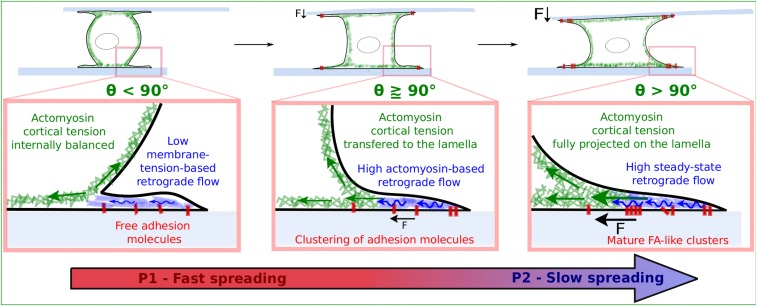Fig. 6.
Summary of the results emphasizing the interplay between 3D cell shape evolution, traction force generation, and growth of FAs during early cell spreading. In the first phase, the cell is rounded, the spreading rate is high, and there is no force, nor FAs. The transition toward the second phase of spreading is initiated when the cell body contact angle θ reaches 90°. At this point, the cell starts to generate traction forces on the substrate. Force generation is followed by the onset of FA growth. Eventually, ruffling in the lamella is damped and the rate of spreading decreases. Remarkably, above 90°, FAs start to grow at the edge of the lamella, and not along the contact line between the cell body and the lamella. This observation suggests that the apical cell body cortical tension may be transmitted as tangential rearward forces in the lamella, triggering a coordinated cell-scale retrograde flow and FA growth in the lamella. This scenario is strongly supported by the fact that, in the parallel-plates geometry, FA growth is sensitive to the normal stiffness resisting the cell body contraction (Fig. 5 E–G), both the normal force and FA area being proportional to myosin II activity (SI Text and ref. 22).

